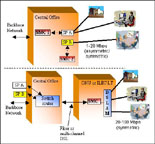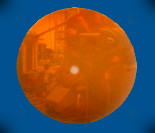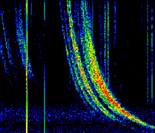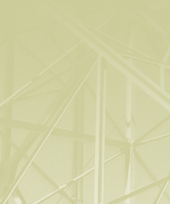 |
 |
|
|

 |
Dynamic Spectrum Management Group
Led by: Prof. John M. Cioffi
Dynamic Spectrum Mananagement Group studies advanced digital
communication technologies for high-speed multi-user
wireline/wireless networks. Research topics include fundamental
limits, spectrum management techniques, coding and tranceiver
archtectures for next generation communication systems such as
multi-user digital subscriber line (DSL) and multiple antenna
wireless
local area network (WLAN).
http://www-isl.stanford.edu/~cioffi/dsm/ |

 |
Radar Interferometry Group
Led by: Prof. Howard Zebker
Radar interferometry uses synthetic aperture radar
mapping satellites to form detailed images of geological
surfaces. This powerful technique can reveal centimeter-sized
changes in the Earth's crust due to natural phenomena.
http://www-star.stanford.edu/sar_group
|
 |
 |
Optical Communications Group
Led by: Prof. Joseph M. Kahn
The Optical Communications Group performs research on advanced
communication techniques for a variety of optical transmission
media, including single-mode fiber, multi-mode fiber, and
free-space optical links. Experiments are performed in a
state-of-the-art facility in 41-A Ginzton Laboratory.
https://ee.stanford.edu/~jmk/group/
|
 |
 |
Photonics & Networking Research Lab
Led by: Prof. Leonid G. Kazovsky
Photonics & Networking Reasearch Laboratory (PNRL) was established in 1990 by Professor Leonid G. Kazovsky
for experimental and theoretical research in optical fiber communications. We are interested in and
actively working on components, systems and networks; our main focus is systems.
http://pnrl.stanford.edu
|
 |
Ultra Low Power Group
Led by: Prof. Len Tyler
The Ultra Low Power Technology Group in the Department of Electrical Engineering at
Stanford University is interested in the study and implementation of VLSI processing that is
both low-power and high-performance. This is done through the radical reduction of supply voltages
using chips fabricated in tunable low threshold CMOS processes.
http://www-star.stanford.edu/projects/ulp
|
 |
 |
VLF - Very Low Frequency Group
Director: Prof. Umran Inan
We investigate the earth's electrical environment, its upper atmosphere, lightning discharges,
radiation belts, and the ionized regions of the earth's upper atmosphere known as the ionosphere
and magnetosphere. Much of our work invloves the use of very low frequency (VLF) electromagnetic waves
which are generated by lightning discharges, by man-made transmitters and by the energetic radiation
belt electrons.
http://www-star.stanford.edu/~vlf/
|
 |
 |
Wireless Communications Group
Led by: Prof. Donald Cox
In this program, faculty and graduate students are exploring new wireless access techniques,
new signal processing techniques for implementing access technologies and new mobility management
techniques for large scale networks. In order to demonstrate the feasibility of the new techniques,
large scale computer simulations are being created and run, wireless systems and architectures are
being synthesized and analyzed, and prototype circuits are being built and tested in a laboratory.
http://wireless.stanford.edu
|
 |
 |
Wireless Systems Lab
Led by: Prof. Andrea Goldsmith
Wireless technology has enormous potential to change the way people and
things communicate. Future wireless networks will allow people on the
move to communicate with anyone, anywhere, at any time, using a range of
multimedia services. Wireless communications will also enable a new
class of intelligent home electronics that can interact with each other
and with the Internet. Wireless distributed control will enable
automation of transportation, factories, and homes, and wireless sensor
networks will allow remote collection and processing of large amounts of
data for environmental monitoring and security, among other
applications. Wireless video will support applications such as distance
learning and remote medicine. There are many technical challenges that
must be met in order to make this vision a reality. These challenges
transcend all levels of the overall system design, including hardware,
communication link design, and networking. In addition, synergies
between the hardware, link, and network designs must be exploited in
order to meet the demanding performance requirements of these future
systems.
http://wsl.stanford.edu
|
 |
 |
Wireless Sensor Networks Lab
Led by: Prof. Andrea Goldsmith
Wireless sensor network design is a multi-disciplinary area with many
challenging open problems in both theory and system design. Due to the
delay and energy constraints along with the collaborative nature of both
communication and processing inherent to these networks, the system must
be designed via a cross-layer optimization methodology. It is also
important that data processing, network intelligence, and decision
making operations be distributed among the network nodes for robustness
and energy efficiency. This calls for collaboration between the nodes on
data fusion, decision fusion, and efficient data aggregation and routing.
http://wsnl.stanford.edu
|
 |
< back to top
|
 |
|
|
|


